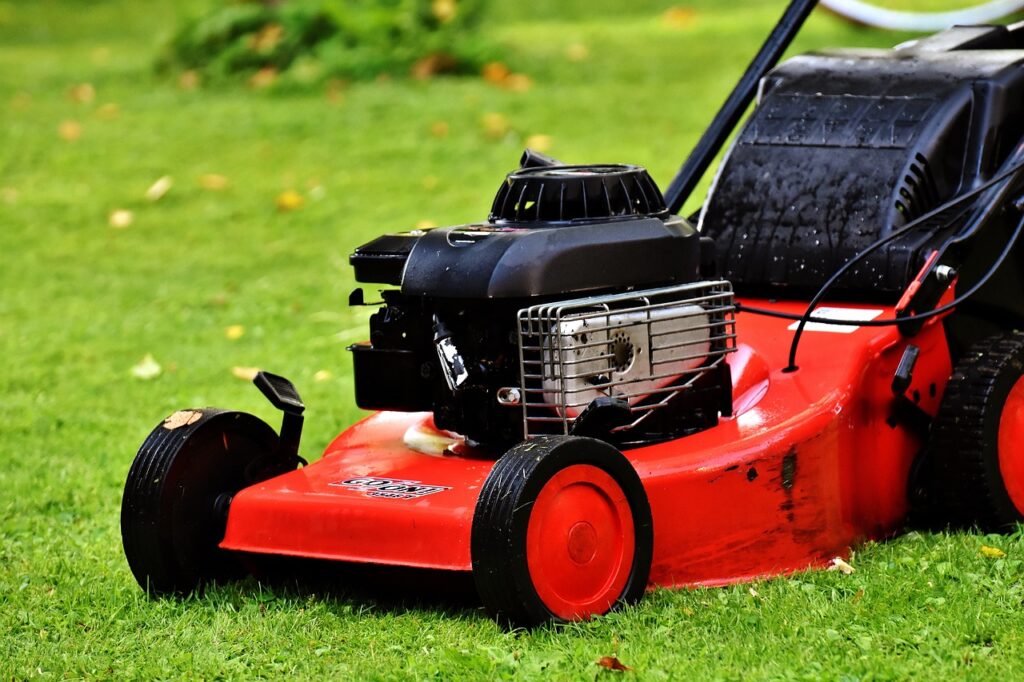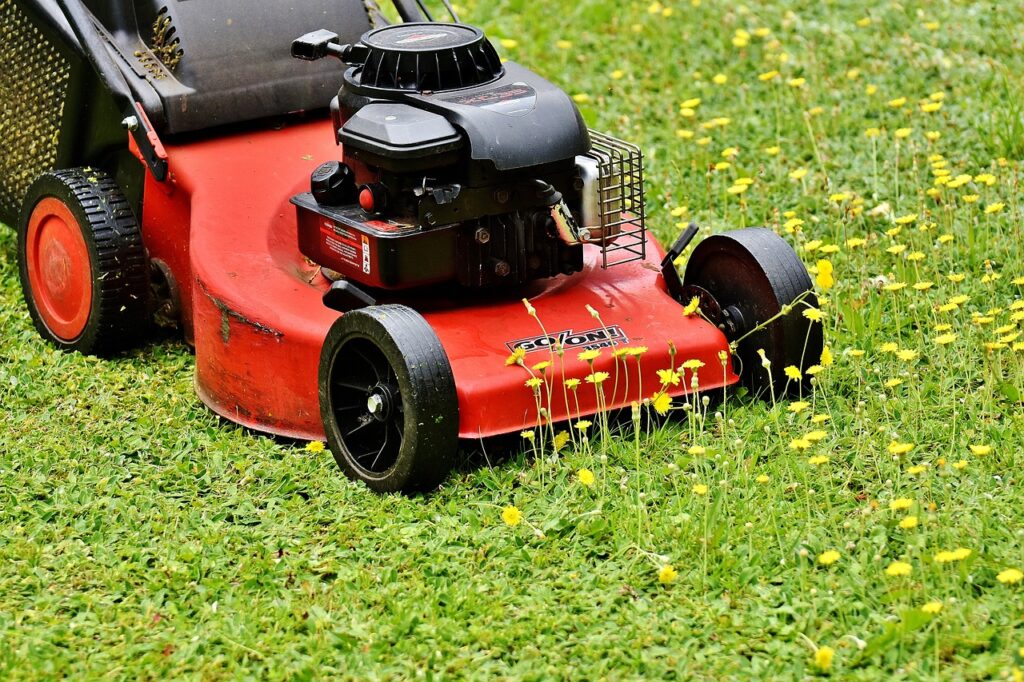Lawn maintenance is a task many of us find ourselves facing, and the battle between the remote-controlled and traditional lawn mowers is one that continues to perplex. In this article, we will weigh the pros and cons of both options, giving you a comprehensive understanding of which mower may just be the perfect fit for your outdoor oasis. So, whether you’re a turf enthusiast or just looking for a hassle-free way to keep your lawn in shape, join us as we explore the world of remote-controlled versus traditional lawn mowers.


Our #1 Recommendation: Segway Navimow i105N Robot Lawn Mower Perimeter Wire Free 1/8 Acre RTK+Vision Robotic Lawnmower, AI-Assisted Mapping, Virtual Boundary, APP Control, 58dB(A) Quiet, Multi-Zone Management
Check Latest Price on AmazonCost
a. Remote-controlled lawn mowers
When it comes to cost, remote-controlled lawn mowers may initially seem more expensive compared to traditional lawn mowers. The advanced technology and additional features of remote-controlled mowers often result in a higher price tag. However, it’s important to consider the long-term cost benefits. Remote-controlled mowers are typically more energy-efficient, which can lead to lower electricity or fuel expenses in the long run. Additionally, the precision cutting capabilities of these mowers can result in reduced need for lawn care services, saving you money in the long term.
b. Traditional lawn mowers
Traditional lawn mowers generally have a lower upfront cost compared to their remote-controlled counterparts. These mowers are widely available and come in a variety of models, catering to different budget ranges. However, it is important to consider ongoing costs such as fuel or electricity, maintenance, and repairs. Traditional lawn mowers tend to have higher energy consumption and may require more frequent maintenance, which can add up over time.
Convenience
a. Remote-controlled lawn mowers
When it comes to convenience, remote-controlled lawn mowers take the lead. Instead of physically pushing or guiding the mower, you can control it remotely, allowing you to effortlessly mow your lawn without exerting much physical effort. This is particularly beneficial for individuals with mobility issues or those who find it challenging to push heavy equipment. Additionally, some remote-controlled mowers offer features such as programmable schedules, allowing you to set specific mowing times even when you’re not at home.
b. Traditional lawn mowers
While traditional lawn mowers may not offer the same level of convenience as their remote-controlled counterparts, they are still relatively easy to use. Push or self-propelled mowers allow you to navigate your lawn manually, giving you greater control over the mowing process. However, compared to remote-controlled mowers, traditional mowers may require more physical effort, especially when maneuvering around obstacles or on uneven terrain.
Check Out Affordable RC Mowers On Sale!
Control
a. Remote-controlled lawn mowers
Remote-controlled lawn mowers excel in terms of control. With precise steering and maneuverability, you have complete control over the mower’s movements. This allows you to effortlessly navigate tight spaces, avoid obstacles, and achieve even, professional-looking results. Some remote-controlled mowers even offer advanced features like slope sensors and automatic path correction to ensure optimal cutting patterns and adaptability to various terrains.
b. Traditional lawn mowers
While traditional lawn mowers offer a certain level of control, they may not match the precision and maneuverability of their remote-controlled counterparts. Push or self-propelled mowers require manual steering and navigation, which may be more challenging when faced with intricate or tight areas. Achieving straight lines and consistent cutting might require more effort and skill with a traditional mower.
Safety
a. Remote-controlled lawn mowers
Remote-controlled lawn mowers prioritize safety with various built-in features. These mowers often come equipped with sensors that detect obstacles and automatically change course to avoid collisions. Some models also have emergency stop buttons or automatic shut-off functions, offering an added layer of safety. Additionally, since the operator does not need to be physically present on the mower, there is a reduced risk of accidents or injuries associated with operating traditional mowers.

Our #1 Recommendation: Segway Navimow i105N Robot Lawn Mower Perimeter Wire Free 1/8 Acre RTK+Vision Robotic Lawnmower, AI-Assisted Mapping, Virtual Boundary, APP Control, 58dB(A) Quiet, Multi-Zone Management
Check Latest Price on Amazonb. Traditional lawn mowers
With traditional lawn mowers, safety precautions are still essential. These mowers require the operator to be physically present, which can increase the risk of accidents if not operated correctly. Safety features such as blade guards and automatic shut-offs are common in traditional mowers, but the responsibility lies with the operator to use them properly. Caution should be exercised when mowing slopes, around obstacles, and in crowded areas to avoid accidents or injuries.

Maintenance
a. Remote-controlled lawn mowers
Maintenance requirements for remote-controlled lawn mowers are generally lower compared to traditional mowers. Remote-controlled mowers often have brushless electric motors, reducing the need for frequent maintenance and repairs. Additionally, these mowers typically have fewer moving parts, resulting in less wear and tear. Regular cleaning, blade sharpening, and battery maintenance are still necessary, but overall, the maintenance tasks are usually more straightforward and less time-consuming.
b. Traditional lawn mowers
Traditional lawn mowers tend to require more maintenance compared to their remote-controlled counterparts. These mowers often have gas-powered engines that require regular oil changes, spark plug replacements, and air filter maintenance. Blade sharpening, belt replacements, and general inspection are additional maintenance tasks that need to be performed periodically. While maintenance requirements may be higher, traditional mowers often benefit from a wide availability of replacement parts and service centers, making repairs and upkeep more accessible.
Terrain Adaptability
a. Remote-controlled lawn mowers
Remote-controlled lawn mowers are designed to adapt to various terrains, offering increased versatility in mowing different types of lawns. Some models feature adjustable cutting heights to accommodate different grass lengths, while others have advanced sensors to automatically adjust speed and cutting patterns based on the terrain. This adaptability makes remote-controlled mowers suitable for lawns with slopes, uneven terrain, or tricky landscapes.
b. Traditional lawn mowers
Traditional lawn mowers may have limitations when it comes to navigating certain terrains. Steep slopes or uneven ground can pose challenges for traditional mowers, potentially affecting the quality of the cut or making it difficult to mow certain areas. It’s important to choose a traditional mower that suits the specific needs of your lawn, considering factors like wheel size, maneuverability, and engine power.

Noise Level
a. Remote-controlled lawn mowers
One significant advantage of remote-controlled lawn mowers is their relatively quiet operation. These mowers often use electric motors that produce significantly less noise compared to gas-powered engines. This lower noise level not only allows for a more peaceful mowing experience for both the operator and neighbors but also reduces noise pollution in general.

Our #1 Recommendation: Segway Navimow i105N Robot Lawn Mower Perimeter Wire Free 1/8 Acre RTK+Vision Robotic Lawnmower, AI-Assisted Mapping, Virtual Boundary, APP Control, 58dB(A) Quiet, Multi-Zone Management
Check Latest Price on Amazonb. Traditional lawn mowers
Traditional lawn mowers, especially those powered by gas engines, tend to be louder compared to remote-controlled models. The noise generated by traditional mowers can be disruptive to the operator and surrounding environment. Some models may have mufflers or noise-reducing features, but overall, traditional mowers are generally louder than their remote-controlled counterparts.
Energy Source
a. Remote-controlled lawn mowers
Remote-controlled lawn mowers are often powered by rechargeable batteries or electric cords. This makes them more energy-efficient and environmentally friendly compared to traditional mowers with gas-powered engines. By using electricity as the energy source, remote-controlled mowers produce zero direct emissions, contributing to a cleaner and healthier environment.
b. Traditional lawn mowers
Traditional lawn mowers are typically powered by gasoline or diesel, relying on fossil fuels as their energy source. This results in direct emissions of greenhouse gases, contributing to air pollution and environmental degradation. While some manufacturers produce more fuel-efficient models, traditional mowers, on average, have a higher carbon footprint compared to remote-controlled mowers.
Cutting Quality
a. Remote-controlled lawn mowers
Remote-controlled lawn mowers often offer superior cutting quality. With advanced cutting technology and blade configurations, these mowers can deliver precise, even cuts, resulting in a visually appealing lawn. Some models also have adjustable cutting heights and mulching capabilities, allowing for customization based on personal preferences and grass conditions. The use of electric power also ensures consistent cutting performance throughout the mowing session.
b. Traditional lawn mowers
Traditional lawn mowers can still provide satisfactory cutting quality, but the precision and uniformity may vary depending on the model and blade sharpness. Achieving a professional-looking cut may require more careful maneuvering and attention to detail with a traditional mower. Blade sharpening and regular maintenance are essential to optimize cutting performance.
Environmentally Friendly
a. Remote-controlled lawn mowers
When it comes to environmental impact, remote-controlled lawn mowers have the upper hand. These mowers produce zero direct emissions while operating, greatly reducing their carbon footprint. Additionally, their electric power source allows for the potential use of renewable energy, further minimizing environmental harm. Remote-controlled mowers contribute to cleaner air quality and a greener planet.
b. Traditional lawn mowers
In comparison, traditional lawn mowers have a larger environmental impact. Gas-powered engines produce greenhouse gas emissions, contributing to air pollution and climate change. The use of non-renewable fossil fuels further exacerbates the negative environmental effects. However, manufacturers have been working to improve fuel efficiency and reduce emissions in newer models, providing greener options within the traditional mower category.
In conclusion, both remote-controlled and traditional lawn mowers have their pros and cons. Remote-controlled mowers offer convenience, precision, and enhanced safety features, albeit at a potentially higher cost. They are versatile, adaptable to various terrains, and environmentally friendly, making them a compelling choice for those seeking advanced mowing technology and ease of use.
On the other hand, traditional lawn mowers offer a more budget-friendly option, albeit with higher maintenance requirements and less precise mowing outcomes. Traditional mowers can still provide satisfactory results and are readily available, making them a viable choice for those on a tighter budget or with simpler mowing needs.
When deciding between a remote-controlled mower and a traditional mower, it’s crucial to consider your specific requirements, preferences, and the unique characteristics of your lawn. By carefully evaluating factors such as cost, convenience, control, safety, maintenance, terrain adaptability, noise level, energy source, cutting quality, and environmental impact, you can make an informed choice that aligns with your needs and values.
Check Out Top Budget RC Mowers!


